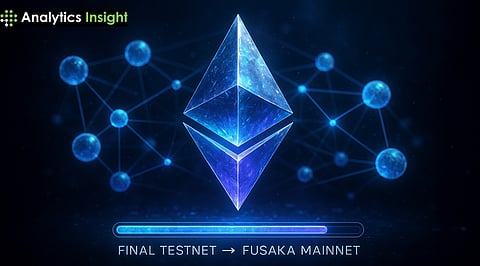

Ethereum is implementing the next Fusaka upgrade, which includes a per-transaction gas limit as a significant move towards network efficiency. The gas cap, which is approximately 16.78 million, ensures that no transaction exceeds the block's capacity. The change is conducive to the distribution of resources and the smoother flow throughout the network.
The Fusaka upgrade (EIP-7825) will impose a gas limit for each transaction, while leaving the overall block gas limit unchanged. Developers expect this change to improve block inclusion rates and lessen congestion caused by large transactions. This measure prevents any single process from monopolizing network capacity, thus promoting fairness and increasing throughput for all users.
The Ethereum team has implemented the Fusaka test on Holesky and Sepolia testnets. The stage enables developers to test the actual performance of transactions in reality before the mainnet is realized, which is projected to occur in 2025. Preliminary testing shows that it is compatible and functions well with key clients.
The Fusaka upgrade supports the Ethereum roadmap by introducing parallel execution, which allows multiple transactions to be processed simultaneously within a block. This enhancement will significantly improve transaction speed and elevate overall network throughput. The concept of the per-transaction gas cap has a supportive role in ensuring that this architecture is possible, as predictable gas consumption is ensured in a balanced manner.
The developers are currently processing the results of the Fusaka testnets to identify potential challenges encountered in coordinating transactions and block validation. The initial emphasis is to ensure that the distribution of resources is not affected by the heavy network load. The Ethereum Foundation explained that the testnet results will help inform further adjustments before the upgrade can be deployed to the mainnet.
As Ethereum moves towards this parallel processing framework, the network will be capable of processing more transactions without compromising the concepts of decentralization or security. The Fusaka upgrade will be correlated with the larger-scale work, such as sharding and rollup integrations, which constitute the Ethereum vision.
Also Read: Is Ethereum Cycle Top Done? Key Metric Suggests More Growth
Players in the industry consider the Fusaka upgrade to be a significant technical milestone in the continued development of Ethereum. The new gas limit policy enables developers to be more predictable, and transaction costs are more stable and predictable. The network imposes a limit on the volume of gas used per transaction to create a more equitable environment for decentralized applications and smart contracts.
Several major exchanges and infrastructure providers have already begun testing the Fusaka ruleset compatibility. This is to prepare for any potential disruptions that the rollout of the mainnet update may cause. The Ethereum Foundation has invited developers to work with the testnets, report any issues, and update their applications prior to the official launch.
Ethereum is continually improving its performance with the Fusaka rollout and is preparing to scale its network to the next level. The upgrade is also another move to a more efficient, stable, and developer-friendly blockchain ecosystem while improving the chances of an Ethereum price surge.
